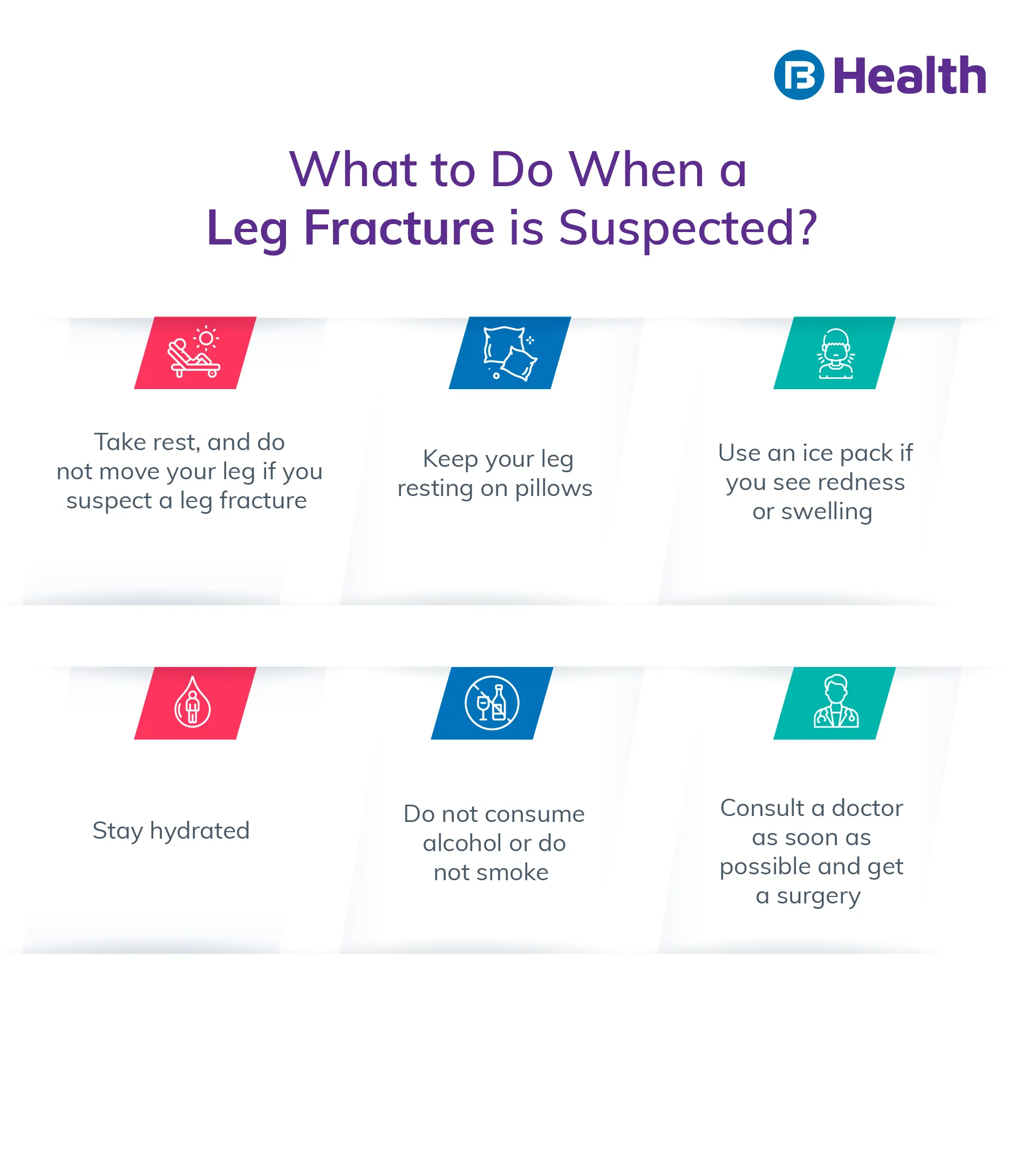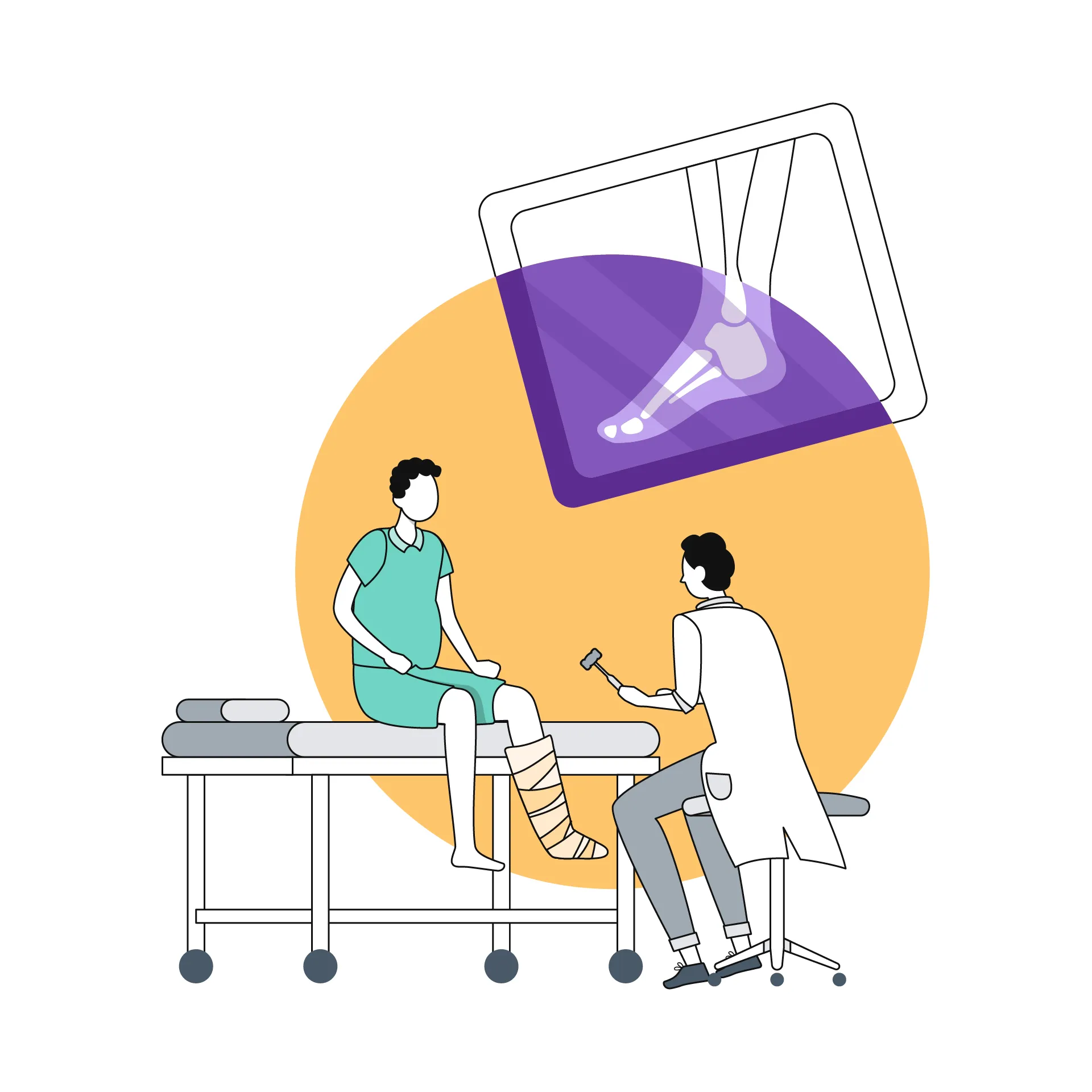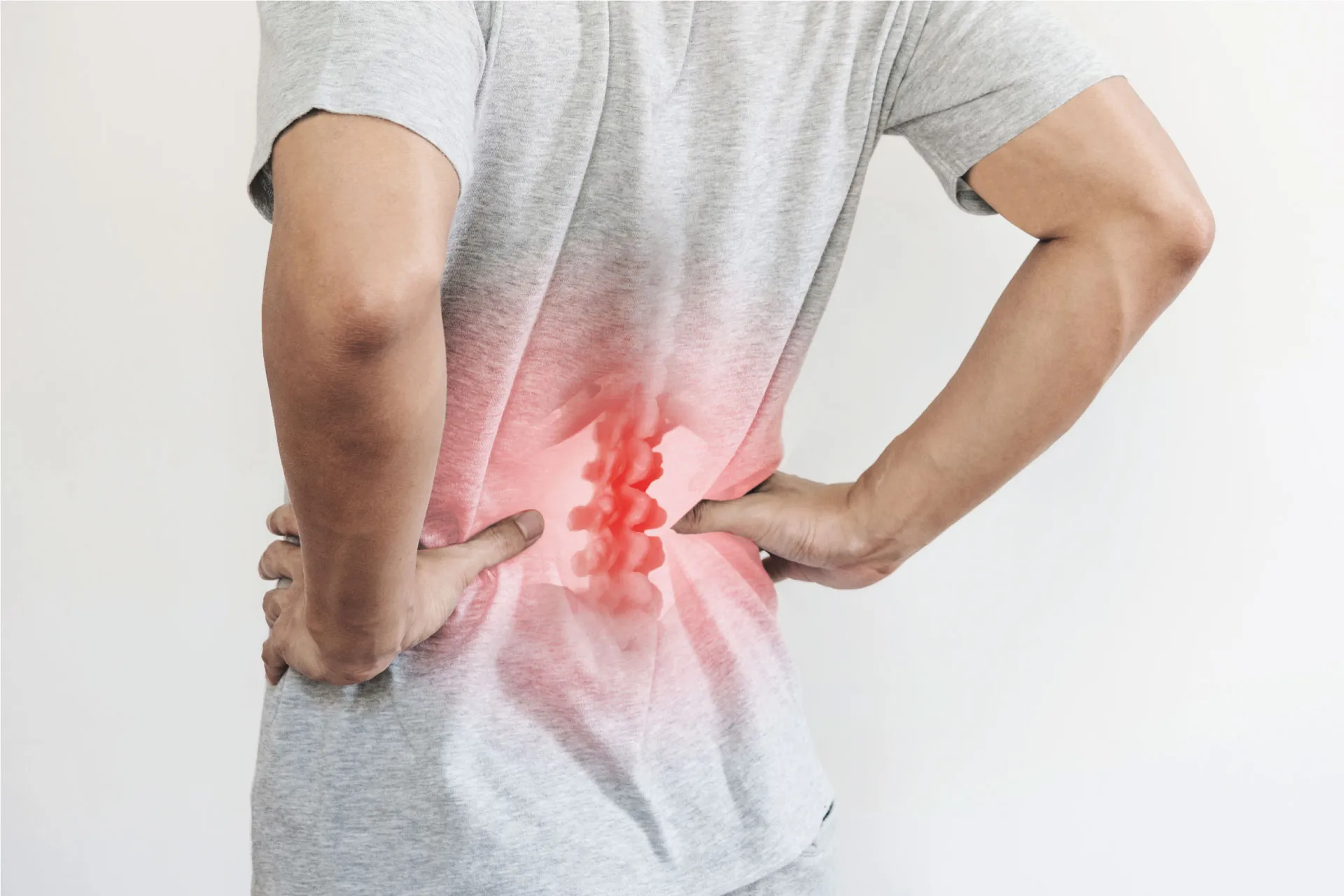Orthopedic | 7 min read
Leg Fracture: Symptoms, Causes, Treatment, Types
Medically reviewed by
Table of Content
Synopsis
You do not need to worry at all if you have a leg bone fracture. It is a common injury, let's first know the symptoms, treatment, and how many days it will take to recover and then take steps accordingly. but you should definitely get a doctor consultation for further treatment.
Key Takeaways
- As a home remedy, apply an icepack on the swollen area if you suspect that you have a leg fracture
- Leg bone fracture is quite common, but it is pretty severe and painful
- If you are having the symptoms of a leg fracture, then visiting an Orthopedic would be the best decision
A broken leg is a serious injury that can require surgery and a lengthy recovery period. It is an incident that can occur during almost any physical activity. For example, a broken leg can happen if there's a sudden, violent twisting force on your lower leg. It often happens when you fall, but it might also occur from impact during an accident or high-impact activities like skiing, snowboarding, or jumping off a roof into shallow water. However, with the proper treatment, a leg fracture can be healed, and you can return to your usual activities as soon as possible.
Symptoms of Leg Fracture
The most common symptom of a broken leg is pain. If this pain suddenly worsens or occurs during activity, there's a good chance that something is wrong. For example, moving the leg might be felt painful. Walking would be pretty troublesome, or you will not be able to walk at all. Also, redness, swelling, or tenderness in the affected area are also good signs of something being wrong. Other injuries, including broken ribs, can accompany the fractured leg.
In addition, your leg might take a different shape. If you've fallen or been in an accident, try to assess your entire body for pain, tenderness, and abnormal sensations.
Additional Read: Fracture in Your BonesCauses for Leg Fracture
- Obesity can be one of the reasons for going through leg fractures [1]
- If any sort of accident takes place
- Osteoporosis can be one of the reasons. It is such a condition that affects the bones. Osteoporosis makes your bones weak, which might lead to a broken bones.

Which Bones Tend to Get Broken?
Femur
This is our body's longest and strongest bone, situated above our knees. The femur bone is also known as the thigh bone.
Tibia
The tibia is also called the shinbone. Tibia mainly supports our body weight.
Fibula
It is the smaller the bones that are situated below our knee. The fibula is also known as the calf bone.
Types of Broken Bones
You might feel uneasiness, but that does not always mean you have a broken bone. It can be a crack too. Actually, the fracture depends on the amount of force. The types of leg fracture bones that are most common are fractured tibia or shin bone, broken fibula, broken femur (thigh bone), and broken patella (knee bone). Have a look at the different types of bone fractures.
Simple Fracture
Simple fracture or close fracture is when the bone suffers from breakage but does not get pierced through the epidermis.
Compound Fracture
A compound fracture or an open fracture is something that gets pierced through the epidermis. Also, it might lead you to have an infection.
Transverse Fracture
A transverse fracture is a condition where your bone gets broken by force in a straight or horizontal line.
Spiral Fracture
Spiral Fracture occurs if a major twisting force is applied to your bone. In such conditions, the fracture line gets twisted around the bone.
Oblique Fracture
The bone will be broken at an angle if an oblique fracture happens.
Greenstick Fracture
The bone gets partially broken, and that too in a regular shape if a greenstick fracture occurs.
Complications of a Leg Fracture
A leg fracture is quite a severe injury. It might lead you to have some complications like:
- Osteoarthritis can make you have heavy pressure on your joints.
- A broken bone can lead you to have damaged muscle.
- The nearby nerves where the broken bone takes place might get damaged.
- You can also end up having bone cancer.
- You can face Scoliosis, too, if you have injury around your spine.

Whom to Call for Help?
A broken leg can be a traumatic event, and you may be in shock. Stay calm and assess the situation. If you suspect you have a leg fracture, see a doctor immediately. If the broken bone has not pierced through the skin, try keeping it splinted. If you are alone and have a leg fracture, you should not try to walk on it. Instead, you should apply a splint or sling to keep the leg immobilized and prevent further injury until you can get help.
Leg Fracture Treatment
The recovery time or how long it will take to get cured depends on where you have a broken bone and obviously on which type of broken bone you are having. The best treatment for a broken leg is to get to a hospital as soon as possible. If you suspect you have a leg fracture, don't try to walk on it. Broken bones often can cause lasting complications if they aren't treated.
You might get a doctor consultation if you have numbness in your leg or foot. Sometimes, we feel like we have an injury, but it is not always possible to visit a doctor. So, if you suspect that you might have a fracture and cannot run to the doctor, you can try some home remedies to heal your injury.
- Relax and take a rest. Do not touch or irritate the injury
- Do not move your leg until you go under any medication
- Use an icepack wrapped in a cloth for a swollen area
- Keep your leg resting on pillows or cushions
- Visit an Orthopedic as soon as possible and get the surgery if needed
Visiting a doctor is the best remedy to treat a broken leg. A doctor may recommend surgery if you have a leg fracture and the bone is out of place. The surgery will place the broken bones back into their correct positions and set the leg in a cast.
How to Recover from Leg Fracture
A broken leg will take a few weeks to heal in most situations. The amount of time it takes to recover fully will depend on the fracture type and how badly the leg was injured. Fractures that require surgery or have broken through the skin are more severe than those that don't. If you have a fractured femur, iron plates, screws and rods can be placed to fix the fracture. If you've got a fracture, you'll want to follow your healthcare provider's instructions on the best recovery.
In the meantime, you can take steps to make your recovery as easy as possible. If you are in the hospital because of the surgery, you will require crutches or walkers; do not worry, and you will get assistance in walking. For leg fracture, after a while, movement exercises with the hip, knee, back, and foot will be included. Some strengthening exercises will also be included. It might take almost a year to get fully recovered.
- Stay hydrated. Drink plenty of water to stay hydrated, as it helps flush out toxins from your system and promote healing.
- Avoid excess movement and do not take any weight. You can move as little as necessary to get around, but don't walk on your broken leg unless it's required.
- Get plenty of rest to allow your body to heal.
- Avoid smoking and drinking alcohol, as nicotine and alcohol can slow the healing process.
- Do not panic. Be patient and stay strong. You'll be back in action in no time.
A leg fracture is a common and painful injury that can happen to everyone. However, it can be severe. Get a doctor consultation from Bajaj Finserv Health if you suspect you have a broken leg. If you can, stay calm and let your friends or family call for help. Try to remain still until you get any help. Just make sure that you are safe and secure. Stay hydrated, take it easy, and you'll soon return to normal activities.
When it comes to broken legs, the quicker you treat them, the less time it will take for you to heal. Though broken legs are often associated with old age, they can also happen to young people during sports and other strenuous activities.
References
- https://www.ncbi.nlm.nih.gov/pmc/articles/PMC7155376/
Disclaimer
Please note that this article is solely meant for informational purposes and Bajaj Finserv Health Limited (“BFHL”) does not shoulder any responsibility of the views/advice/information expressed/given by the writer/reviewer/originator. This article should not be considered as a substitute for any medical advice, diagnosis or treatment. Always consult with your trusted physician/qualified healthcare professional to evaluate your medical condition. The above article has been reviewed by a qualified doctor and BFHL is not responsible for any damages for any information or services provided by any third party.





